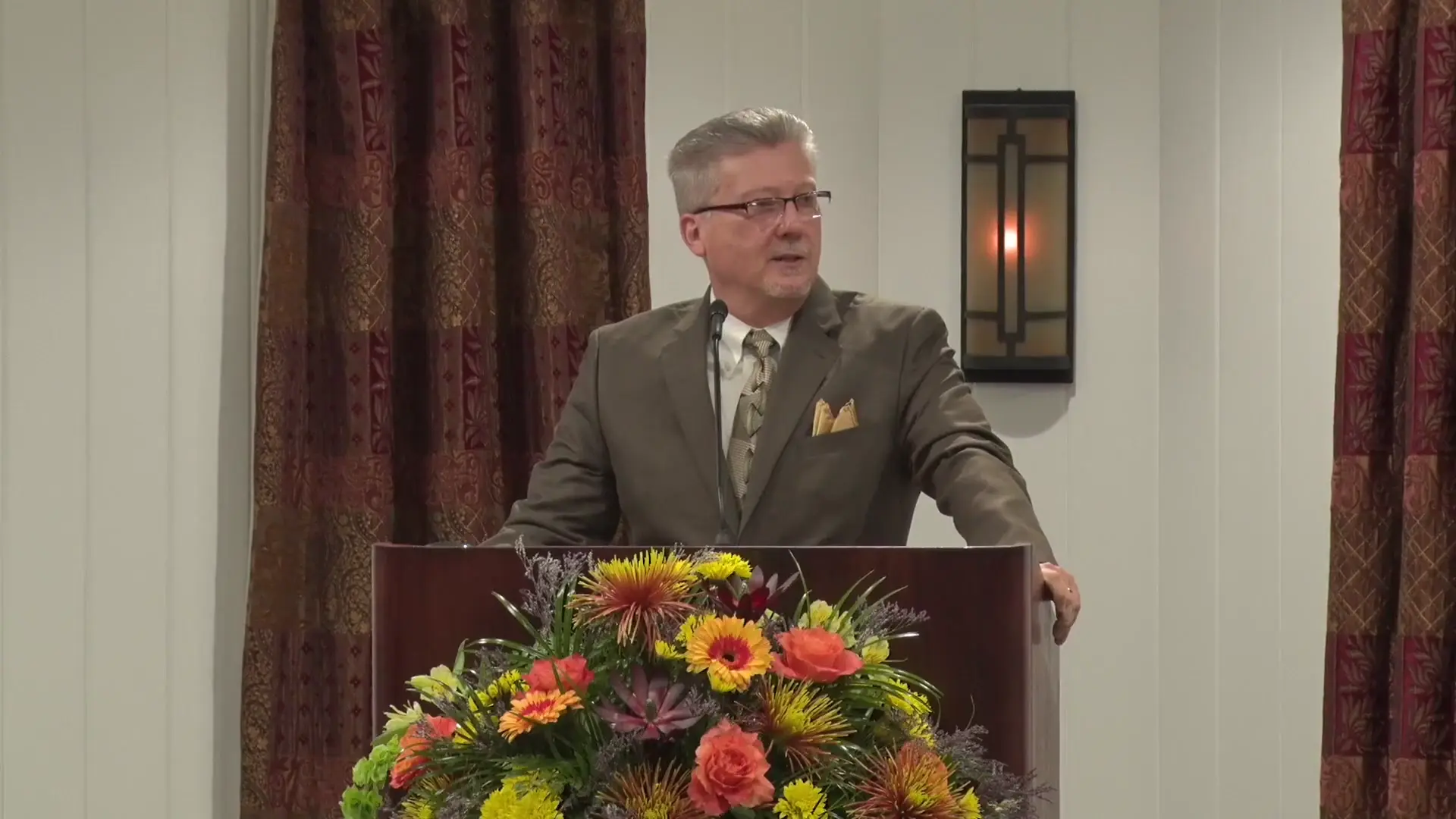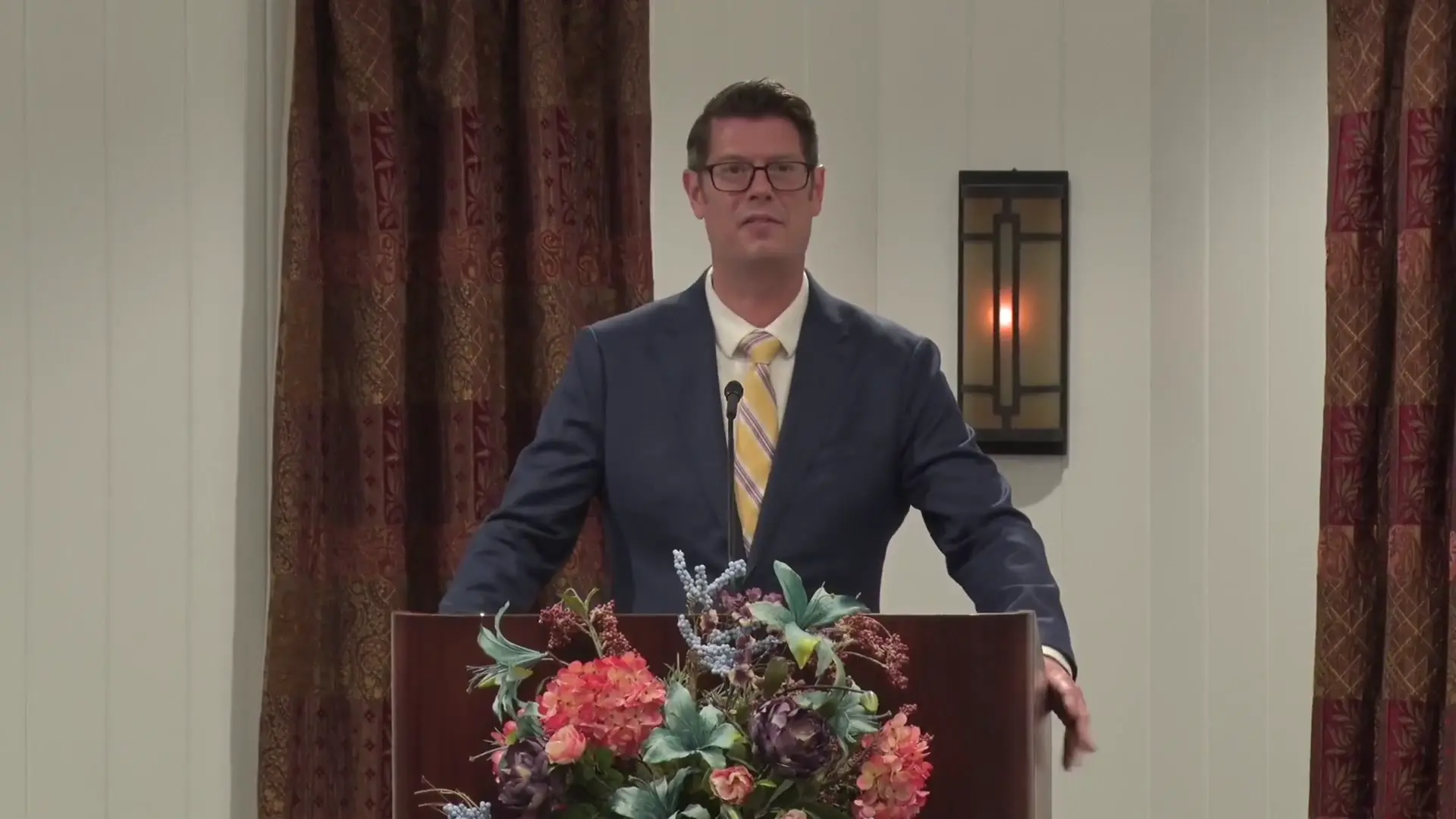Filter by Categories

Who Fulfills the Azazel Goat—Satan or Christ? (Part One)
'Ready Answer' by David C. GrabbeThe Day of Atonement includes a unique ritual involving two goats, as described in Leviticus 16, where the Hebrew word *azazel* is used for the second goat. The meaning of *azazel* is ambiguous, with Strong's Concordance defining it as "goat of departure," derived from roots meaning "goat" and "to go away" or "disappear," while Brown-Driver-Briggs suggests "complete removal." These definitions align with the instructions in Leviticus 16, indicating the goat's role in removing sins from view by bearing them to an uninhabited land. The notion of *azazel* as the name of a wilderness demon or fallen angel is not supported by Scripture, lacking a second or third witness to establish such a role in the atonement process. Instead, the two goats together form a single sin offering, with distinct roles: one goat is sacrificed to satisfy the Lord's justice, and the other, the *azazel* goat, is presented alive before the Lord to be sanctified and then sent away, symbolizing the complete removal of sin. The ritual's structure does not imply two personalities but rather two purposes within the compound atonement, focusing on payment for sin and its total departure from awareness.
Who Fulfills the Azazel Goat— Satan or Christ? (Part Five)
'Ready Answer' by David C. GrabbeThe azazel goat in Leviticus 16 is central to understanding the Day of Atonement ritual. God's stated purpose for the azazel goat is to bear all the iniquities of the children of Israel to an uninhabited land, symbolizing the complete removal of sin from view. Leviticus 16:21-22 instructs the high priest to lay both hands on the azazel's head, confessing over it all the iniquities, transgressions, and sins of the people, indicating a symbolic transference and substitution. This goat, designated as the goat of departure or complete removal, contrasts with the first goat, which cleansed the holy place, while the azazel bore the sins away entirely. The fulfillment of the azazel goat points to the Messiah, as Scripture states that our iniquity was laid on Him, He bore our sins, and He took them away, leaving no need for any other being to accomplish this. The casting of lots for the two goats, as described in Proverbs 16:33, ensured that God determined which goat would be sent away, emphasizing that He dictates the terms of worship and chooses between functions, not personalities. This process served as a reminder of the priest's fallibility and the necessity to look to God for direction in the ritual.

Who Fulfills the Azazel Goat—Satan or Christ? (Part Two)
'Ready Answer' by David C. GrabbeIn the Day of Atonement ritual, the second goat, known as the azazel or the goat of departure, played a significant role in bearing the sins of the people out of sight. This act of carrying sins away aligns with the concept of complete removal, one of the meanings associated with azazel, reflecting the idea of sins being taken as far as the east is from the west. The azazel goat, bearing all the iniquities, was led to an uninhabited land, a place described as cut off, symbolizing a state of separation or forgetfulness akin to the grave, where sins are no longer a factor in God's view. This bearing of sins by the azazel parallels the ultimate removal and forgetting of transgressions, emphasizing a conscious divine choice to disregard them. Furthermore, the azazel was led away by a suitable man who required cleansing afterward, underscoring the symbolic purity needed in this act of removal. The focus remains on the complete removal of sin from view, highlighting the profound significance of this ritual act in restoring the relationship between God and His people.
Understanding the Azazel Goat
Sermonette by David C. GrabbeThe goat for azazel (complete removal) bore the sins of the nation out of sight. Jesus Christ likewise had our iniquities laid on Him, and He bore them.

Azazel: Beginnings
Sermon by David C. GrabbeWhile there is a handful of common starting places for understanding the azazel, none of them has multiple witnesses of Scripture. We must begin elsewhere.

Who Fulfills the Azazel Goat— Satan or Christ? (Part Three)
'Ready Answer' by David C. GrabbeHebrews 9 and 10 clarify the Atonement ritual of Leviticus 16. The author makes no mention of Satan, but says that Jesus bears our sins like the azazel goat.

Azazel: Endings
Sermon by David C. GrabbeOne goat had to die for cleansing; the other goat had to remain alive for bearing the sins away. Jesus fulfilled both roles. Satan's binding atones for nothing.
Who Fulfills the Azazel Goat— Satan or Christ? (Part Four)
'Ready Answer' by David C. GrabbeThe Day of Atonement is not fulfilled with the binding of Satan. Rather, there are numerous prophecies of God atoning for the sins of physical Israel.

Azazel: Observations and Questions
Article by Pat HigginsDoctrinal changes after decades of believing differently can raise questions. God reveals truth by His Spirit on His timetable and for His own reasons.
Why Two Goats on Atonement? (Part Two)
CGG Weekly by David C. GrabbeIn the Day of Atonement ritual, the first goat's blood cleansed the altar of sin while the azazel goat took them away. Christ fulfilled both roles.
The Two Goats of Leviticus 16
Sermonette by David C. GrabbeThe first goat is a blood sacrifice to cleanse the altar. The second goat—the 'azazel' or 'complete removal'—is led away and freed (not bound by a chain).
Sins Borne Away
Sermonette by Richard T. RitenbaughThe Day of Atonement represents both a blood sacrifice for covering/cleansing and a means of removing sin permanently from the camp of Israel.
The Peculiarities of Atonement
CGG Weekly by Richard T. RitenbaughFasting teaches us to realize just how dependent we are on God. Every day, every hour, every minute, He supplies us with everything we need for life.
Is Barabbas the Fulfillment of the Scapegoat?
CGG Weekly by David C. GrabbeBecause of Matthew's inclusion of a number of Day of Atonement-related symbols, one theory holds that Barabbas was a type of the scapegoat (azazel).
Inventing Goddesses and Demons (Part Three)
CGG Weekly by David C. GrabbeSome modern translations of Leviticus 16 assert that the live goat (scapegoat) was a sacrifice that God commanded Israel to send to a demon named Azazel!
The Unity of Atonement
Sermonette by Austin Del CastilloWe fast to learn humility, sacrifice, and empathy towards our Savior, who had His blood shed and who bore our sins, being forsaken for our sakes.
Atonement Goats and Passover Lambs
Sermonette by David C. GrabbeThe Day of Atonement is not about Satan, but about the complete cleansing from sins through Christ. The Passover is not a sin offering, but a peace offering.
Devil in the Details?
CGG Weekly by David C. GrabbeA mysterious commentary has been used and repeatedly re-quoted as a proof that the azazel goat represents Satan. This source warrants closer inspection.
Jesus Christ, the Bearer of Sin
Sermonette by David C. GrabbeThe Messianic prophecy in Isaiah 53, plus the testimony of Peter and the author of Hebrews, show that Jesus fulfilled the azazel goat's role by bearing sin.

Jesus in the Feasts (Part Four): Atonement
Sermon by Richard T. RitenbaughIsaiah 53 and passages from the New Testament substantiate Christ's dual role in shedding His blood and bearing away sins, thereby reconciling humanity to God.
Led Outside the Gate
CGG Weekly by David C. GrabbeJesus permitted Himself to be sent by the leaders and led by their agents in true meekness, submitting to the Father's will, even cleansing those who led Him.
The Doctrine of Israel (Part Fourteen): Israel Redeemed
Sermon by Richard T. RitenbaughGod employs a winnowing process in selecting those who will enter the Millennium. The process includes punishment for Israel's failure to serve as priests.

Deuteronomy, Land Sabbaths, Atonement, and Third Tithe
Sermon by Ryan McClureWhat has come to light regarding reading Deuteronomy, the year of release, the Day of Atonement, the third tithe year, and Passover.
Who Is Responsible For Sin?
Sermonette by David C. GrabbeThough Satan influences, the choices an individual make are totally his own, even for those without God's Spirit. We sin when we are drawn away by our own desires.
An Intimate Expanding Relationship
Sermon by Mark SchindlerWe must trade our impulsive and capricious carnal natures for a controlled, sacrificing nature, imitating Christ in an intimate, expanding relationship.
Inventing Goddesses and Demons
Sermonette by David C. GrabbeThe Jews turned a Babylonian myth of Lilith into a fabrication about a woman before Eve. Some translations suggest Israel sacrificed to a demon named Azazel.
The Day of Atonement and Israel's Future
Sermonette by David C. GrabbeThe cleansing of Joshua's filthy robes in Zechariah 3 is a future application of the cleansing in Leviticus 16, when Jesus Christ cleanses Israel in the future.
Do Angels Live Forever? (Part One)
Sermon by John W. RitenbaughWe cannot assume that angels are immortal and share the same kind of spirit God Almighty has; we cannot assume they are indestructible.
A Footnote on the Start of Christ's Ministry
Sermonette by David C. GrabbeWhen the angry members of the local synagogue tried to push Jesus over the cliff, they paralleled the Jewish tradition for the azazel goat.